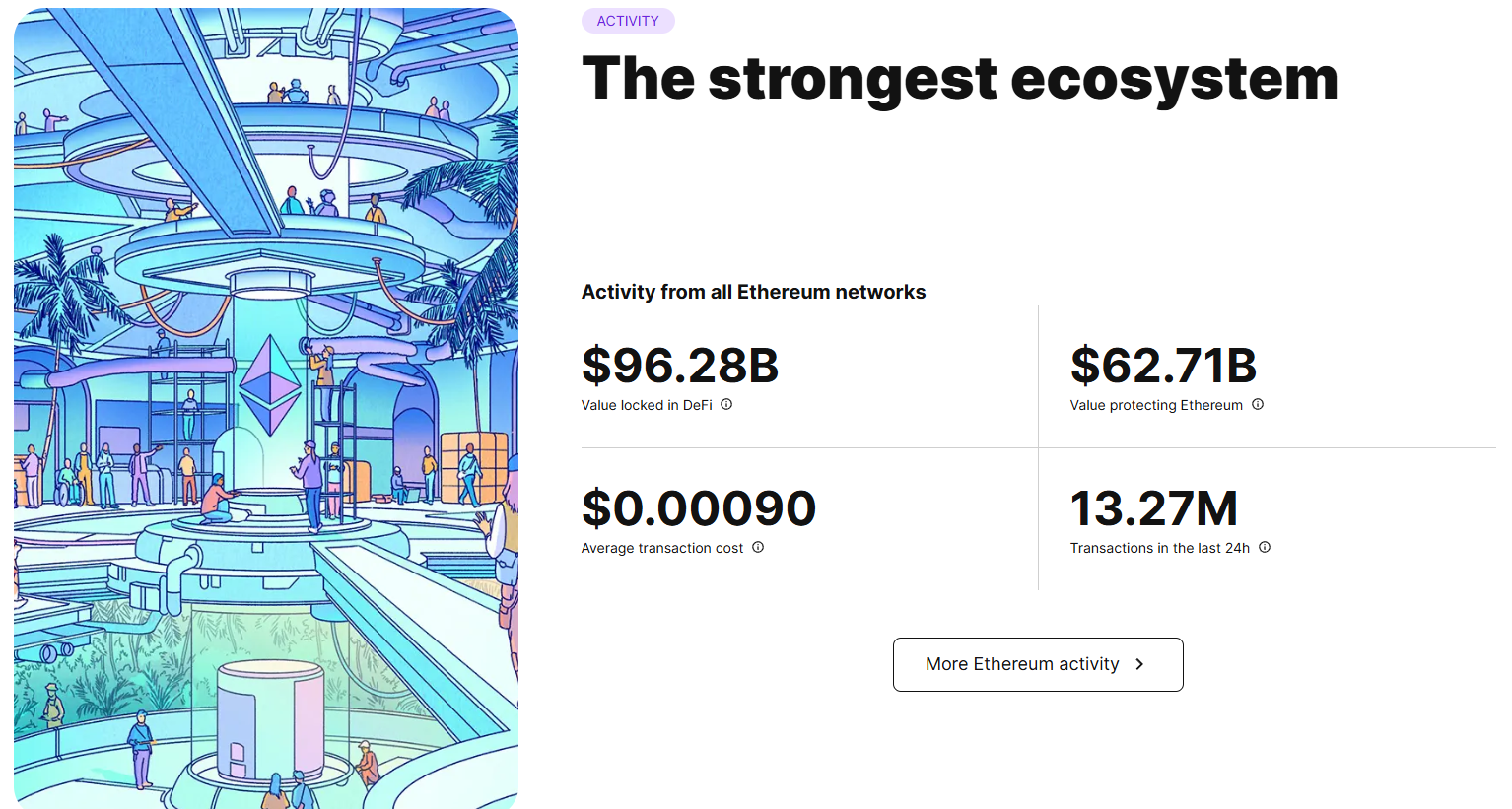TRC20 or ERC20 - Which Standard to Choose and What's the Difference
TRC-20 vs ERC-20 – Comparison of TRON and Ethereum Token Standards
The two most popular blockchains in cryptocurrency are Ethereum and TRON. Although bothblockchaindesigned to interact with smart contracts, they have their own features and application scenarios. They also have their own standard for creating and managing tokens in networks: ERC20 and TRC20.
In this article, we will take a detailed look at each of them, highlighting the key differences and features.
What are token standards?
A token standard is a protocol with a set of parameters and rules establishedXecosystem at the software level. These rulesmust be followed by all network participants when creating new coins. In turn, these rules form the basic principles:for example, how cryptocurrencies can interact in the network or what the process of their creation looks like, the stages of launching into circulation. In fact, it is token standards that give token developers the opportunity to create and launch them on blockchains. They also provide the ability to interact with decentralized applications, smart contracts and user wallets in blockchain ecosystems.
Dvumyamainwestandardwetokens in cryptocurrencies are ERC20 from Ethereum and TRC20 from TRON. ERC-20 became the first and most widespread standard, as it was adopted by thousands of digital assets issued on the Ethereum blockchain.Among themUniswap (UNI), Shiba Inu (SHIB), Chainlink (LINK) and, of course, the stablecoin Tether (USDT).
The main functions of token standards include:
- INopportunityьmovement of tokens between users.
- BSafelyepossessionseand managementetokens by users.
- INinteractionsetokens with decentralized applications (dApps).
Let's look at two of the most popular token standards in the world of blockchain and cryptocurrency.
What is ERC20

ERC-20 is the most popular standard deployed in the Ethereum ecosystem. The protocol has become a fundamental standard for most cryptocurrencies in the decentralized finance (DeFi) space. With ERC20, developers have the ability to create tokens that can be exchanged, stored, and transferred across one of the largest ETH networks. ERC20 has played a key role in the rapid development of decentralized applications (dApps) and the initial coin offering (ICO) segment.
What is TRC20

TRC-20 is a token standard on the TRON blockchain. Although it shares similarities with ERC-20, it is designed to support the TRON ecosystem. It provides a framework for the creation of fungible tokens and digital assets, including utility tokens and USDT (TRON) stablecoins. TRC20-compliant tokens can seamlessly interoperate with dApps, wallets, and decentralized exchanges, just like ERC-20, but within the TRON ecosystem.
TRC20 tokens are created using smart contracts that define their key functionalities, such as transfer, balance inquiry, and transaction confirmation. The TRON Virtual Machine supports these smart contracts, ensuring automation and transparency of transactions.
What is the difference between TRC20 and ERC20
ERC-20 and TRC-20 tokens are widely used in the cryptocurrency world, but they operate on different blockchains and have a number of key differences:
1. Technology and blockchains used
- ERC-20 is a token standard designed specifically for the Ethereum ecosystem. It provides uniform rules for issuing and managing tokens, making them compatible with decentralized applications (DApps), exchanges, wallets, and smart contracts running on the Ethereum network.
- TRC-20 is a similar standard for the TRON blockchain, created to integrate tokens with various services within the TRON ecosystem. This standard allows for easy interaction with decentralized applications and smart contracts on this network.
2. Transaction processing speed
- ERC-20 uses the Ethereum blockchain , which at the basic level (L1) processes about 15-30 transactions per second (TPS). However, with the introduction of second-level (Layer 2) solutions such as Rollups, the overall network throughput increases significantly. Under high network loads, delays can increase significantly, and confirmation of a transfer takes on average 5 to 10 minutes.
- TRC-20 operates on the TRON network, which is capable of processing about 2,000 transactions per second, although in practice this figure may be lower during periods of high load. Thanks to the high throughput of the blockchain, confirmation of one transaction takes only 3-5 seconds.
3. Transaction fees
- ERC-20 requires payment of fees for transfers in the form of "gas" (Gas Fee), the value of which increases during periods of excessive load on the network. Fee costs can reach several tens of dollars per transaction during periods of high load.
- TRC-20 offers cheaper transfers. On average, users pay $3-7 per transaction, making TRC-20 a preferred option for those looking to save on transaction costs. Additionally, users can use an internal resource in the form of TRON energy, which allows them to reduce the cost of transfers to almost zero.
4. Ecosystem and compatibility
- ERC-20 has a well-developed ecosystem. The protocol is integrated into most DeFi platforms, smart contracts, cryptocurrency services, and decentralized applications. Tokens of this standard are supported by most cryptocurrency wallets and exchanges.
- TRC-20 is actively developing, but its ecosystem is still inferior to Ethereum in the number of available services. TRC-20 is supported by many exchanges and wallets, but it is less widespread than ERC-20.
5. Security level
- ERC-20 runs on Ethereum, one of the most decentralized and secure blockchains, making it resistant toto the majorityattacks. The network security is ensured by a large number of nodes and an active community of developers.
- TRC-20 operates on the Delegated Proof-of-Stake (DPoS) consensus, which speeds up transaction processing and reduces fees. However, this model may affect the degree of decentralization of the network due to the limited number of delegates responsible for confirming transactions.
ERC-20 or TRC-20: what to choose
The choice between these two standards depends on the specific tasks of the user. Both formats have their own advantages and disadvantages that should be taken into account before use.
In case you need maximum compatibility and access to a wide range of DeFi products on the crypto market, you can mainly use ERC-20. However, if the priority is speed and low fees, then TRC-20 will be the best option.
How to convert ERC-20 tokens to TRC-20
Interoperability between different blockchains remains one of the key challenges in the crypto industry. ERC-20 (Ethereum) and TRC-20 (TRON) tokens are the most common formats for stablecoins, including USDT, as well as for many other assets. However, due to the difference in ecosystem architecture, users often face the need to convert tokens from ERC-20 to TRC-20.
There are several ways to exchange ERC20 and TRC20 tokens:
- Through centralized cryptocurrency exchanges (Binance, ByBit, OKX, KuCoin, etc.).
- Bridges are specialized services for transferring tokens from one network to another.
- Exchangers – cryptocurrency exchange platforms.
Centralized exchanges
The vast majority of popular platforms support both token standards.To exchange tokens through centralized exchanges,need to:
- Top up your balance on the exchange by transferring ERC-20 tokens, such as USDT, to your personal account balance on the crypto exchange. To do this, copy the deposit address (ERC-20) on the exchange and send funds from your wallet (MetaMask, Trust Wallet or Ledger) to this address.
- Withdraw funds to your wallet by going to the withdrawal section, select the TRC-20 network, specifying the address of the TRON wallet (for example, TR.ENERGY Wallet, Trust Wallet or TRONLink). Then confirm the transaction by paying the transfer fee.
Advantages of the method:
- High security (exchanges monitor the correctness of transactions);
- Simplicity (does not require complex settings);
- Speed (usually takes 2-3 minutes).
Disadvantages of the method:
- Most crypto exchanges require Know Your Customer (KYC) verification;
- There may be restrictions on withdrawal (minimum amount, limits);
- High fees for withdrawals in other networks.
Cross-chain bridges
You can use special bridges that allow you to exchange tokens and stablecoins between different networks.
Examples of such bridges:
- Symbiosis Finance;
- SwapSpace;
- AllBridge.
How the bridge works:
- The user sends ERC-20 tokens to the bridge smart contract;
- The smart contract freezes tokens on Ethereum and issues an equivalent amount of TRC-20 tokens on the TRON network;
- The received TRC-20 tokens can be withdrawn to your wallet.
Advantages of the method:
- Does not require KYC and an exchange account.
- Can be used directly from crypto wallets (Metamask, Trust Wallet, Phantom, etc.).
Disadvantages of the method:
- You need to check the swap fees in bridges carefully;
- Processing time may vary depending on network load.
Cryptocurrency exchangers
If you don't have an account on the exchange and bridges are difficult to use, you can use online exchangers.
Popular services:
- Changelly;
- SimpleSwap;
- Exolix.
It should be noted that on one of the largest digital currency exchange aggregators, BestChange, you can always find a suitable exchange option.
How to exchange ERC-20 to TRC-20 via an exchanger:
- Select assets for exchange (for example, USDT ERC-20 - USDT TRC-20);
- Enter your TRON wallet address;
- Send ERC-20 tokens to the specified address;
- After the transaction is confirmed, receive an equivalent amount of TRC-20.
Advantages of the method:
- Convenience and ease of use;
- Speed of exchange (on average 5-15 minutes).
Disadvantages of the method:
- High commission compared to exchanges;
- Delays may occur under high network load.
Which method to choose
For beginners:
- For example, ByBit, OKX, Binance exchanges are the most convenient and secure way.
For advanced traders:
- Bridges (AllBridge, SwapSpace, SwapZone) – suitable for frequent transfers between networks.
For quick exchange:
- Exchangers (Changelly, SimpleSwap) – when speed is important, but there is no desire to deal with exchanges.
Conclusion
The choice between ERC-20 and TRC-20 depends on the specific needs of the user. If low fees and high transaction speeds are a priority, TRC-20 is the most relevant option. However, if compatibility and access to multifunctional decentralized applications and services are important to the user, ERC-20 is worth considering. Both standards have their strengths and weaknesses. ERC-20 is suitable for long-term investors working primarily with DeFi, and TRC-20 will be the best choice for those who make frequent transfers and exchanges in cryptocurrencies.

